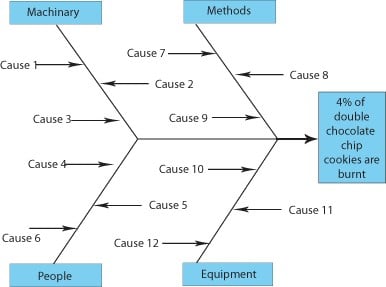According to Harvard Business Review, product recalls have increased steadily from the 1980s. In 1988, the U.S. Consumer Product Safety Commission (CPSC) handled 221 recalls covering approximately eight million product units. The number of recalls jumped to 367 in 1993, and in this decade, the CPSC has been involved in about 500 per year. Overall, when we look at all U.S. federal agencies, there were more than 4,000 product recalls per year between 2010 and 2015.
Several factors are driving the rise in product recalls. Government regulators in the United States, European Union, and elsewhere have gained more recall authority, while consumers can more easily spread product problems via the internet and social media. Add to these increasingly global supply chains that handle ever-more complex products, and you have the perfect storm for a continued rise in product recalls.
While most companies shudder at the thought of a potentially profit-draining recall, you can prepare for a successful product recall with the following five strategies for recall management.
#1: Be Proactive
Your company needs to perform product recalls quickly and accurately – the longer it takes, the higher the damage to your brand and the higher your recovery costs. To be proactive, you need to know three things:
- The location of all your products: your ERP system must rapidly report the location of individual product lots (or batches) in your supply chain, broken down by UPC.
- A product retrieval process: until you know how widespread and complicated a recall is, you can’t adequately prepare to retrieve the product(s) in question. However, you can assign a recall management team and align with a third-party retrieval service provider before things get too bad. When you discover the recall includes product from 50 states and four foreign countries is not the time to start researching product retrieval services.
- The PR and communications strategy elements: social media means that bad news about products spreads. As soon as you catch wind that one of your products has a problem, you need to be ready with an announcement template and the knowledge of how to control the message (i.e., damage control). You don’t want consumers or the press to get the message out first.
Proactively handling these elements will prevent potentially disastrous results.
#2: Avoid Taking Half-steps
Too many companies turn product recalls into near-disasters. They focus on profits and cut corners in regard to making things right for their consumers. Consider Intel’s mishandling of the problem with its Pentium microprocessors in 1994. The processors had a flaw that affected rarely used calculations; Intel decided not all consumers would be affected and refused to refund or exchange products unless consumers could prove that their personal calculations had been compromised. That response blew up in Intel’s face – IBM canceled orders, and many consumers switched to non-Intel cores.
In contrast, Samsung offered full refunds to Galaxy Note 7 (the phones that overheated and caused fires) owners. Samsung’s quarterly profit took a hit, but their recall procedure helped them recover quickly; the company maintains a loyal customer base to this day.
#3: Knowledgeably Communicate with Customers
The bigger the recall, the higher the likelihood your internal staff can’t retrieve the product(s) while continuing their daily routine, so you’ll need to hire more customer service representatives or have existing staff take on more work. Consumers won’t be contacting your reps just to talk, however – they’ll want answers that satisfy their product safety concerns, so before you add a ‘live chat’ feature and extra phone-based reps, train all reps on the recall’s specifics.
Before you face a recall, appoint a product recall manager who owns a checklist of must-do items that should include:
- Arranging for technical product details
- Choosing people to represent the company
- Training those people
- Aligning the retrieval and PR teams to avoid mixed messages
#4: Educate Customers Regarding the Specific Product Defect
Companies that fail to inform consumers about the nature of the defect, its potential impact, and how to avoid the dangers run four significant risks – loss of message control, financial penalties from government agencies, money lost to individual and class-action lawsuits, and a reduction in brand loyalty. A company that doesn’t educate consumers will find an abundance of damaging – and likely inaccurate – theories about the recall on social media and possibly even in government agency press releases. If a company isn’t prepared, they could lose many loyal customers.
#5: Cooperate with Government Agencies
It rarely pays to hide data from government regulators. In addition to facing enormous fines, you’ll also fall under harsh, long-term scrutiny. Moreover, government agencies like the FDA can help you recover from a recall; if you offer accurate information and cooperate fully, agencies can issue public notices that prove positive to your position.
To optimize cooperation with government agencies, you should have an ERP system that manages the information in your end-to-end product supply chain. By having all product-related data, from sourcing and raw materials to delivery and in-field tracking, you’ll make it easier for regulators to approve your product recall actions as soon as possible.
Conclusion
Most companies are surprised by a product recall, but that doesn’t mean they have to be damaged by it. Follow the five strategies outlined above so your company can continue to thrive in the face of a recall. For more information, contact us today.










Leave a comment